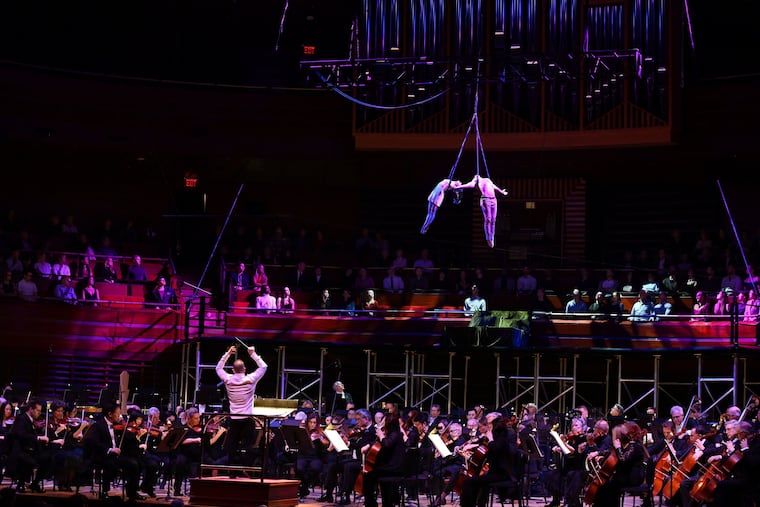Philadelphia Orchestra trigger warning: Expect partial nudity this weekend
The ensemble is presenting 'Romeo and Juliet' with the modern dance troupe Brian Sanders' JUNK.

Is there a wrong reason to have a semi-naked couple rolling around in bed during a Kimmel Center concert by the Philadelphia Orchestra?
Not on Thursday at Verizon Hall, when the subject was Romeo and Juliet, with the Prokofiev ballet about Shakespeare’s sexual outlaws in a special presentation featuring the “physical theater” company Brian Sanders’ JUNK — whose members don’t keep their clothes on very long.
The audience was warned on the orchestra’s website that partial nudity was in store. Was the Sanders/Prokofiev coupling the start of a relationship, or just a one-night stand? As someone who went for the music (and who will leave choreographic discussions to others), I’d call it an entertaining but only intermittently successful hookup.
Originally dismissed as undanceable when completed in 1936, Prokofiev’s score is sometimes staged and often excerpted in symphonic programs. Music director Yannick Nézet-Séguin said he’s been dying to conduct the entire ballet for years, but on Thursday, the 140-minute score was about 75 percent there.
>> READ MORE: Brian Sanders’ JUNK’s aerial ‘Romeo and Juliet’ feels surprisingly in sync with Philadelphia Orchestra
Sanders’ 11-member company — positioned in the Conductor’s Circle overlooking the orchestra, with more space allowed by a specially built extension and cables enabling aerial effects with the dancers — didn’t perform the entire piece. Also, a choreographer of Sanders’ unconventional bent is more apt to comment on the narrative rather than to carry it.
Was the listening experience enhanced by the visual element? Not for me — at least compared to the revelations I’ve experienced upon rediscovering Stravinsky and Bernstein ballets with the original choreography. And I can’t say I enjoyed watching Juliet (Julia Higdon) dangled in midair with safety measures masked in ways that made me fear for her well-being. (In the theater, I prefer fake danger.)
Then again, Prokofiev’s score doesn’t need accoutrements.
Though modern in its extremes of heart-melting lyricism, long-breathed melodies, and walls of abrasive harmony, the ballet’s format harks back to Tchaikovsky’s era, with 52 sections — all distinctive unto themselves but related to one another — that take breaks from the story and that are about nothing but dance. Nézet-Séguin relished the score, employing the Philadelphia sound at its most seductive, though with a slightly grainy edge that felt genuine and intense.
Also, the lack of conventional choreography meant the conductor wasn’t held to steady-pulse ballet tempos. He was free to shape phrases as rhapsodically as he liked. With a score that tests any orchestra in nearly every possible way, the musicians had their eyes glued to their music (as opposed to the scantily clad dancers), though understandably there were still bits of audible struggle.
Cuts in the score seem to have been made with an ear for thematic progression, as the music often has a what-will-happen-next? quality. Conductors such as Michael Tilson Thomas have made their own arrangements with a more sensitive ear for key relationships. Without that, cuts can create musical non sequiturs. Something like Romeo and Juliet — the Scratch Mix?
CLASSICAL REVIEW
Romeo and Juliet
The Philadelphia Orchestra repeats the program with Brian Sanders’ JUNK at 2 p.m. Friday, April 5, and 8 p.m. Saturday, April 6, at the Kimmel Center, 300 S. Broad St. Tickets: $79-188. Information: 215-893-1999 or philorch.org.